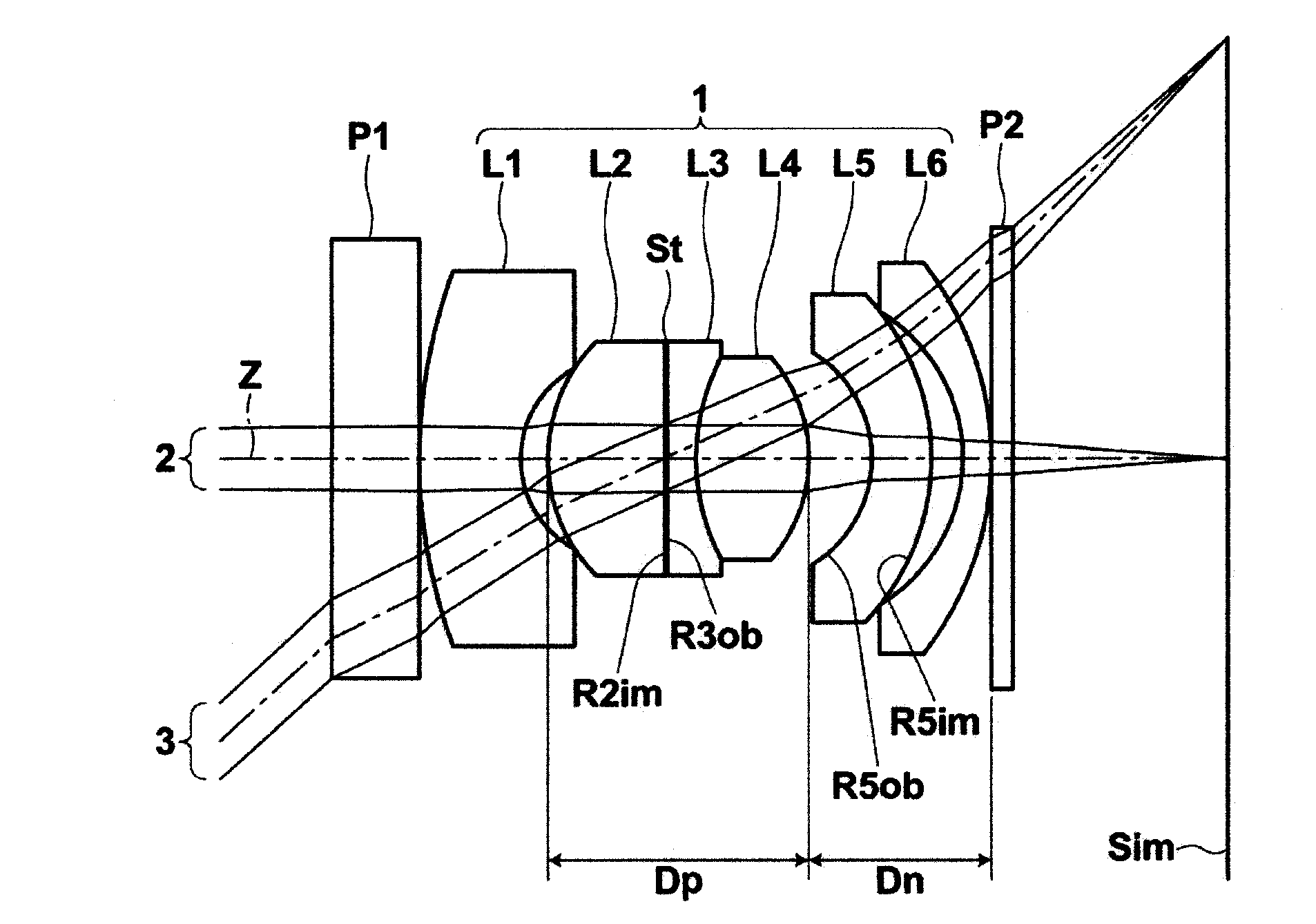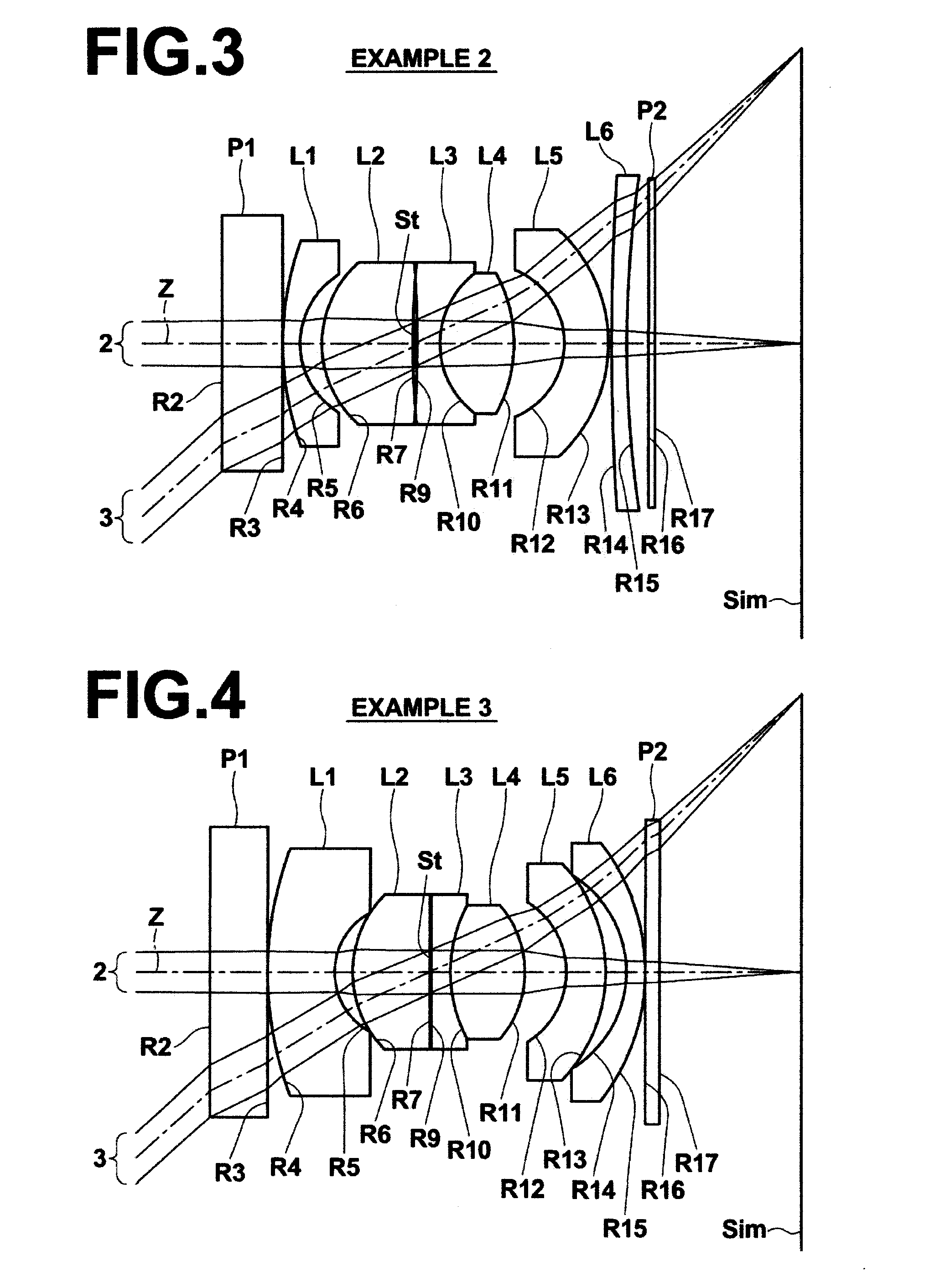Imaging lens and imaging apparatus
a technology which is applied in the field of imaging lens and imaging apparatus, can solve the problems of insufficient wide angle of view to reduce the size of the apparatus, the inability to adjust the symmetry of the optical system, and the inability to achieve excellent correction of various aberrations, so as to improve the symmetry of the optical system, and reduce the size of the optical system
- Summary
- Abstract
- Description
- Claims
- Application Information
AI Technical Summary
Benefits of technology
Problems solved by technology
Method used
Image
Examples
Embodiment Construction
[0060]Hereinafter, embodiments of the present invention will be described with reference to drawings. First, with reference to FIG. 1, an imaging lens according to an embodiment of the present invention will be described. FIG. 1 is a cross section illustrating the structure of an imaging lens 1 according to an embodiment of the present invention and optical paths. The imaging lens 1 illustrated in FIG. 1 corresponds to an imaging lens in Example 3, which will be described later. In FIG. 1, the left side is the object side, and the right side is the image side. Axial rays 2 from an object located at a predetermined finite distance, and rays 3 at a maximum angle of view are also illustrated in FIG. 1.
[0061]As illustrated in FIG. 1, the imaging lens 1 includes first lens L1, second lens L2, third lens L3, fourth lens L4, fifth lens L5, and sixth lens L6, which are arranged along optical axis Z in this order from the object side. The first lens L1 is a negative meniscus lens having a co...
PUM
 Login to View More
Login to View More Abstract
Description
Claims
Application Information
 Login to View More
Login to View More - R&D
- Intellectual Property
- Life Sciences
- Materials
- Tech Scout
- Unparalleled Data Quality
- Higher Quality Content
- 60% Fewer Hallucinations
Browse by: Latest US Patents, China's latest patents, Technical Efficacy Thesaurus, Application Domain, Technology Topic, Popular Technical Reports.
© 2025 PatSnap. All rights reserved.Legal|Privacy policy|Modern Slavery Act Transparency Statement|Sitemap|About US| Contact US: help@patsnap.com



